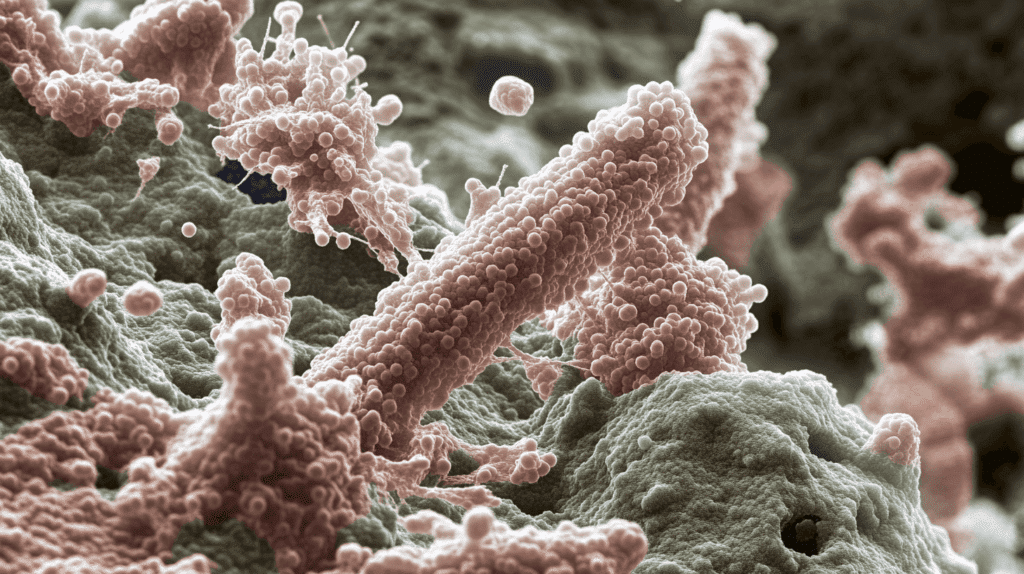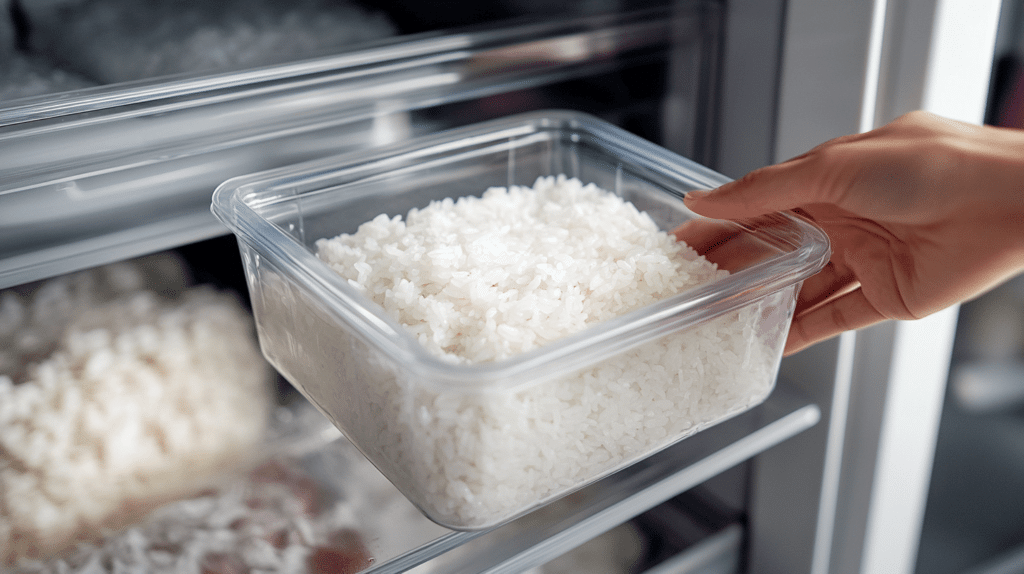Introduction
Fried rice syndrome, a foodborne illness caused by Bacillus cereus, can lead to symptoms like vomiting and diarrhea after consuming contaminated rice. Understanding how fried rice syndrome is diagnosed is crucial for identifying its causes and preventing further health complications. This article explores the methods used to diagnose this condition, common symptoms, and tips to avoid it altogether.
Table of contents
How is Fried Rice Syndrome Diagnosed?
Fried rice syndrome, caused by Bacillus cereus, can lead to foodborne illness with symptoms like vomiting and diarrhea. Diagnosing this condition requires a combination of patient history, clinical examination, and laboratory tests. While it often resolves without medical intervention, accurate diagnosis becomes essential in severe cases or during outbreaks.
Causes of Fried Rice Syndrome

Bacillus Cereus and Its Role
Bacillus cereus is a spore-forming bacterium. Its spores are resistant to high cooking temperatures and can survive the rice cooking process. If cooked rice is left at room temperature for an extended period, the spores germinate and multiply. As the bacteria grow, they produce two types of toxins:
- Emetic Toxin: Causes nausea and vomiting.
- Diarrheal Toxin: Leads to diarrhea and abdominal cramps.
Why Fried Rice?
Fried rice is a common culprit because it is often prepared in bulk, cooled improperly, and reheated for serving. The combination of starchy content and exposure to warm temperatures provides an ideal environment for bacterial growth.
Symptoms of Fried Rice Syndrome
The symptoms of fried rice syndrome depend on the type of toxin ingested:
- Emetic Symptoms: Nausea and vomiting, appearing within 1–5 hours of eating contaminated rice.
- Diarrheal Symptoms: Watery diarrhea, abdominal cramps, and sometimes mild fever, occurring 6–15 hours after consumption.
These symptoms are usually mild and self-limiting, resolving within 24–48 hours. However, severe cases, though rare, can lead to dehydration and complications in vulnerable individuals such as children, the elderly, or those with compromised immune systems.
Prevention of Fried Rice Syndrome
Proper Rice Handling

- Cool Quickly: After cooking, cool rice to below 40°F (4°C) within two hours.
- Store Correctly: Keep leftover rice in a refrigerator and consume it within 1–2 days.
- Reheat Thoroughly: When reheating, ensure the rice reaches a temperature of at least 165°F (74°C).
For additional creative rice tips, such as improving flavor and cooking techniques, see 10 Delicious Mix-Ins to Make Rice Taste Better.
General Kitchen Hygiene
- Use clean utensils and containers for storage.
- Avoid leaving cooked rice at room temperature for prolonged periods.
How Serious is Fried Rice Syndrome?
While fried rice syndrome is rarely fatal, it can cause significant discomfort and pose risks to vulnerable individuals. Understanding its causes and prevention is essential to avoid foodborne illnesses and enjoy rice dishes safely.
By following proper storage and reheating practices, the risk of fried rice syndrome can be minimized, ensuring that your meals remain both delicious and safe.
Symptoms of Fried Rice Syndrome
Common Symptoms to Expect
Symptoms of fried rice syndrome vary depending on the type of toxin involved—emetic (vomiting) or diarrheal.
- Emetic Symptoms: Nausea and vomiting, usually caused by heat-stable toxins.
- Diarrheal Symptoms: Abdominal cramps and diarrhea caused by heat-sensitive toxins.
Severity of Symptoms
In most cases, the symptoms are mild and self-limiting, lasting 24–48 hours. However, severe cases can occur, especially in individuals with weakened immune systems.
For example, knowing What Is the Fried Rice Syndrome? can help in making informed food choices.
How Long Does it Take to Feel Symptoms?
Fried rice syndrome is a foodborne illness caused by the bacterium Bacillus cereus. The symptoms of this condition depend on the type of toxin produced by the bacteria—either the emetic toxin, which causes vomiting, or the diarrheal toxin, which leads to diarrhea. Both forms can result in gastrointestinal distress, but their onset times and specific symptoms differ.
Emetic Symptoms (Vomiting Syndrome)
The emetic form of fried rice syndrome is caused by a heat-stable toxin produced by Bacillus cereus. This toxin targets the stomach and upper gastrointestinal tract, leading to nausea and vomiting. Key symptoms include:
- Nausea: A sudden and overwhelming feeling of sickness.
- Vomiting: Often violent and repetitive.
- Abdominal Pain: A sharp or cramping sensation in the stomach.
Onset Time: Symptoms typically appear within 1 to 5 hours after consuming contaminated food.
Diarrheal Symptoms (Diarrheal Syndrome)
The diarrheal form is caused by a heat-sensitive toxin that affects the intestines, leading to symptoms such as:
- Watery Diarrhea: Frequent and loose stools.
- Abdominal Cramps: Painful spasms in the stomach area.
- Bloating: Swelling or a full feeling in the abdomen.
- Mild Fever (in some cases): A slight rise in body temperature.
Onset Time: Symptoms usually develop within 6 to 15 hours after eating contaminated rice.
Duration of Symptoms
In most cases, symptoms last for 24 to 48 hours and resolve on their own without medical intervention. However, severe cases can lead to dehydration, especially in individuals who are already vulnerable, such as young children, the elderly, or those with weakened immune systems.
When to Seek Medical Attention
While fried rice syndrome is generally mild, you should seek medical care if you experience:
- Persistent Symptoms: Vomiting or diarrhea lasting more than 48 hours.
- Severe Dehydration: Signs include dry mouth, dizziness, and reduced urination.
- High Fever: A fever above 102°F (38.9°C) that doesn’t subside.
- Severe Abdominal Pain: Pain that worsens or doesn’t improve.
Preventing Symptoms
To prevent fried rice syndrome and its symptoms, follow these food safety practices:
- Properly store cooked rice at a temperature below 40°F (4°C).
- Consume leftovers within 1–2 days.
- Reheat rice to at least 165°F (74°C) before eating.
By understanding the symptoms and taking preventive measures, you can enjoy rice dishes safely without worrying about fried rice syndrome.
How is Fried Rice Syndrome Diagnosed?
Fried rice syndrome is a type of foodborne illness caused by Bacillus cereus bacteria, and its diagnosis involves identifying the cause of the symptoms through a combination of patient history, clinical evaluation, and laboratory testing. While it often resolves on its own without the need for medical confirmation, accurate diagnosis may be necessary in severe or recurring cases.
Clinical Diagnosis
Patient History
To begin with, healthcare providers collect a detailed patient history. This helps them identify the likely source of the symptoms. For instance, they may ask about:
- Recent Meals: Did you consume rice or other starchy foods in the past 24 hours?
- Timing of Symptoms: When exactly did the symptoms, such as vomiting or diarrhea, begin?
- Other Symptoms: Are there additional issues like fever, severe pain, or dehydration?
These questions are important because they help narrow down the diagnosis to fried rice syndrome, particularly when symptoms align with the incubation period of Bacillus cereus. Moreover, the type of symptoms—whether they are emetic (vomiting) or diarrheal—can indicate the specific toxin involved.
Physical Examination
After gathering the history, doctors often perform a physical examination. For example, they may check for signs of dehydration, such as dry mouth, low urine output, or rapid heartbeat. This step is critical, especially when symptoms are severe or the patient is from a vulnerable group, such as young children or the elderly.
Laboratory Testing
Stool Sample Analysis
In cases where the symptoms persist, stool sample analysis is frequently performed. This test can confirm the presence of Bacillus cereus or its toxins. As a result, it becomes easier to pinpoint the cause of the illness.
Food Sample Testing
If leftover rice or any other suspected food is available, it can also be analyzed. This test is particularly useful in outbreaks involving multiple individuals. Not only does it confirm contamination, but it also helps in identifying whether improper storage or reheating practices contributed to the issue.
Blood Tests
For more severe cases, blood tests may be necessary. For instance, these tests can detect dehydration, check electrolyte levels, or rule out systemic infections. Although rare, such cases usually require immediate attention.
Differential Diagnosis
While the symptoms of fried rice syndrome are distinctive, they can sometimes overlap with other foodborne illnesses. For example, infections caused by Salmonella or E. coli may present similar signs. Therefore, doctors carefully rule out other possible causes based on patient history, symptoms, and the specific foods consumed. This thorough approach ensures an accurate diagnosis.
When is Diagnosis Necessary?
In many cases, fried rice syndrome is mild and resolves within 24–48 hours. Consequently, formal diagnosis may not always be required. However, there are certain situations where medical attention becomes crucial:
- Persistent Symptoms: When symptoms last beyond 48 hours.
- Severe Dehydration: Particularly when accompanied by dizziness, dry mouth, or minimal urination.
- High-Risk Patients: Such as infants, the elderly, or immunocompromised individuals.
- Outbreaks: In cases involving multiple individuals, identifying the source helps prevent further spread.
Preventing Fried Rice Syndrome

Safe Handling of Rice
- Proper Cooling: Store cooked rice at a temperature below 40°F (4°C) within 2 hours of cooking.
- Avoid Prolonged Storage: Consume leftovers within 1–2 days.
- Reheat Thoroughly: Heat rice to at least 165°F (74°C) before eating.
Kitchen Hygiene Practices
- Clean Utensils: Ensure cookware and utensils are free from contamination.
- Separate Storage: Keep raw and cooked food separate to avoid cross-contamination.
Explore other rice-related tips and techniques, such as How to Make Rice Taste Like a Restaurant, to enhance your culinary adventures.
FAQs
Can Fried Rice Syndrome Be Fatal?
In rare cases, severe dehydration or complications from diarrhea can pose serious risks, particularly for vulnerable individuals.
How Long Do Symptoms Last?
Most symptoms resolve within 24–48 hours without medical intervention.
What Should I Do If I Suspect Fried Rice Syndrome?
Drink plenty of fluids to prevent dehydration and seek medical attention if symptoms are severe or persistent.
Can Other Foods Cause Similar Illness?
Yes, Bacillus cereus can contaminate other starchy foods like pasta and potatoes if mishandled.
Does Refrigeration Kill Bacillus Cereus?
Refrigeration slows bacterial growth but does not kill the spores. Proper storage and reheating practices are essential.
Conclusion
Fried rice syndrome is a preventable foodborne illness caused by improper handling of rice. Symptoms typically manifest within 1 to 15 hours of consumption, depending on the toxin involved. By understanding the risks and adopting safe food practices, you can enjoy your favorite rice dishes without worry. Always store and reheat rice properly to minimize the chances of contamination.

